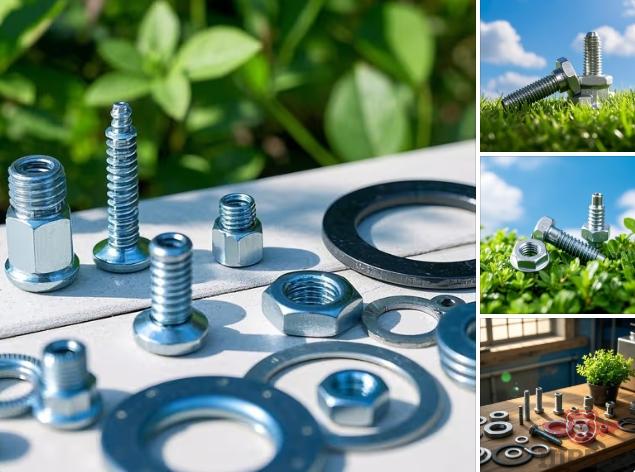Introduction to Eco-Friendly Fasteners
In recent years, the hardware industry has witnessed a significant shift toward sustainability, driven by environmental concerns and regulatory pressures. One of the most notable developments is the rise of eco-friendly fasteners. These innovative components are designed to minimize environmental impact while maintaining high performance in various applications. From construction to automotive manufacturing, eco-friendly fasteners are becoming a cornerstone of sustainable practices.
Eco-friendly fasteners are typically made from recyclable, biodegradable, or low-carbon-emission materials. They are engineered to reduce waste, energy consumption, and harmful emissions during production and use. This article explores the key aspects of eco-friendly fasteners, including their materials, applications, and benefits, to help you understand why they are gaining traction across industries.

1. Materials Used in Eco-Friendly Fasteners
The foundation of eco-friendly fasteners lies in the materials used. Traditional fasteners often rely on steel, aluminum, or plastic, which can have significant environmental footprints. In contrast, eco-friendly fasteners are made from sustainable alternatives such as:
-
Recycled Metals: Fasteners crafted from recycled steel or aluminum reduce the need for virgin materials, lowering energy consumption and carbon emissions.
-
Biodegradable Plastics: For applications requiring plastic fasteners, biodegradable options made from plant-based polymers are gaining popularity.
-
Low-Carbon Alloys: Advanced alloys with reduced carbon content are being developed to meet both performance and environmental standards.
These materials not only reduce environmental impact but also offer comparable strength, durability, and corrosion resistance to traditional options.
2. Applications of Eco-Friendly Fasteners
Eco-friendly fasteners are versatile and can be used in a wide range of industries. Here are some key application scenarios:
-
Construction: In green building projects, eco-friendly fasteners are used to assemble structures made from sustainable materials like cross-laminated timber (CLT) or recycled steel.
-
Automotive: Electric vehicle (EV) manufacturers are increasingly adopting eco-friendly fasteners to align with their sustainability goals.
-
Consumer Electronics: Companies producing smartphones, laptops, and other devices are using biodegradable plastic fasteners to reduce e-waste.
-
Renewable Energy: Solar panel installations and wind turbines often rely on eco-friendly fasteners to ensure the entire system is sustainable.
By integrating these fasteners into their designs, industries can reduce their carbon footprint and meet regulatory requirements.
3. Benefits of Eco-Friendly Fasteners
The adoption of eco-friendly fasteners offers numerous advantages, including:
-
Environmental Impact Reduction: By using recycled or biodegradable materials, these fasteners help conserve natural resources and reduce landfill waste.
-
Energy Efficiency: Manufacturing eco-friendly fasteners often requires less energy compared to traditional methods, contributing to lower greenhouse gas emissions.
-
Compliance with Regulations: Many industries face strict environmental regulations, and eco-friendly fasteners help companies stay compliant.
-
Enhanced Brand Image: Companies that prioritize sustainability can improve their reputation and appeal to eco-conscious consumers.
These benefits make eco-friendly fasteners a smart choice for businesses looking to align with global sustainability trends.
4. Installation Tools and Methods for Eco-Friendly Fasteners
Proper installation is crucial to maximize the performance and longevity of eco-friendly fasteners. Here are some tips:
-
Use Compatible Tools: Ensure that installation tools, such as screwdrivers or wrenches, are suitable for the specific material of the fastener to avoid damage.
-
Follow Manufacturer Guidelines: Adhere to torque specifications and installation methods recommended by the fastener manufacturer.
-
Consider Environmental Conditions: For outdoor applications, choose fasteners with appropriate coatings or treatments to withstand weather conditions.
By following these best practices, you can ensure that eco-friendly fasteners perform optimally in their intended applications.
Conclusion
The rise of eco-friendly fasteners marks a significant step forward in the hardware industry's journey toward sustainability. From their innovative materials to their wide-ranging applications and environmental benefits, these fasteners are reshaping how industries approach manufacturing and construction. By adopting eco-friendly fasteners, businesses can reduce their environmental impact, comply with regulations, and enhance their brand image.

